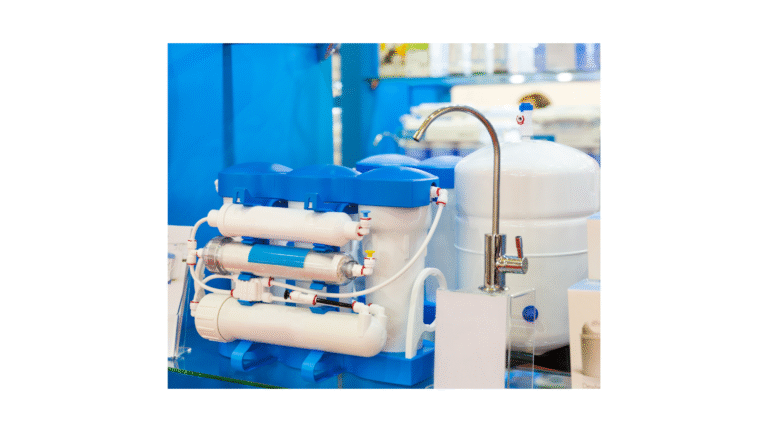Optimizing Your Hazard Storage for Maximum Safety
- Jonathan R.
- August 30, 2024
Table of Contents
Storing hazardous materials is crucial for ensuring safety and efficiency. Poor storage practices can result in serious accidents, but proper techniques can prevent them.
Explore essential strategies for optimizing hazardous material storage and familiarize yourself with the best available products. Keep reading for valuable insights and important tips.
The Importance of Hazard Storage
Hazardous materials pose risks. They can harm people, property, and the environment. Proper storage minimizes these risks. It ensures safety and compliance with regulations. Mishandling hazardous materials can lead to severe consequences. Therefore, it’s essential to use the right strategies and products.
Strategies for Optimizing Hazard Storage
Assess Your Needs
Begin by assessing your storage needs. Identify the types of hazardous materials you handle. Different materials have different storage requirements. Some may need temperature control.
Others may require special containment. Knowing your needs is the first step to adequate storage.
Use Appropriate Containers
Containers are crucial in hazard storage. Use containers designed for specific materials. This prevents leaks and spills and ensures the materials are stored safely. Always check that containers are in good condition. Replace damaged ones immediately.
Label Everything Clearly
Labels are vital for hazard storage and provide essential information. Labels should include the material’s name, hazards, and handling instructions. Clear labeling prevents accidents and helps in emergency situations. Use durable labels that withstand wear and tear.
Implement Segregation
Segregation is vital to safe storage. Store incompatible materials separately to prevent dangerous reactions. For example, keep acids away from bases. Segregation also simplifies inventory management, making material location easier.
Ensure Proper Ventilation
Ventilation is essential in hazard storage areas. It prevents the buildup of toxic fumes, reduces fire risks, and maintains a safe environment for workers. Regularly inspect and maintain ventilation systems.
Use Spill Containment Systems
Spills can occur despite precautions. Spill containment systems are a must. They prevent spills from spreading. Use trays, pallets, and absorbent materials. Quick response to spills minimizes damage and hazards.
Train Your Staff
Staff training is critical. Educate employees on hazard storage procedures. Training should cover handling, labeling, and emergency response. Regular refresher courses keep everyone updated. Trained staff are better equipped to handle hazards.
Maintain Documentation
Documentation is crucial for compliance. Keep records of all hazardous materials, including details on storage, handling, and disposal. Documentation helps in audits and inspections and ensures compliance with regulations.
Top Products for Hazard Storage
Chemical Storage Cabinets
Chemical storage cabinets are essential. They provide secure storage for chemicals, are designed to contain spills, and offer ventilation. Choose cabinets that meet safety standards.
Flammable Liquid Storage Containers
Storing flammable liquids requires special containers. These containers prevent ignition. They are designed to handle pressure changes. Use approved containers for flammable liquids. This reduces fire risks.
Gas Cylinder Storage Racks
Gas cylinders pose unique risks. Proper storage racks are necessary. They secure cylinders and prevent tipping. Racks also allow for easy access and organization. Always store cylinders upright and secure them properly.
Spill Kits
Spill kits are vital for emergency response. They contain absorbent materials, protective gear, and disposal bags. Place spill kits in accessible locations and ensure staff know how to use them.
Safety Labels and Signs
Labels and signs enhance hazard storage by providing clear information. Use labels for containers and signs for storage areas to ensure everyone knows the hazards and handling procedures.
Ventilation Systems
Ventilation systems are crucial. They prevent the accumulation of hazardous fumes. Systems should be designed for specific materials. Regular maintenance ensures they function correctly.
Pallet Systems
Pallet systems aid in organization and make handling large quantities easier. Use pallets designed for hazardous materials, which ensures stability and containment.
Enhancing Safety with Technology
Inventory Management Software
Inventory management software streamlines hazard storage. It tracks materials and locations, helps maintain accurate records, and alerts you to low-stock or expired materials. Use software to enhance organization and compliance.
Remote Monitoring Systems
Remote monitoring adds a layer of safety. Systems track temperature, humidity, and other conditions, and alerts are sent if conditions change. This prevents accidents and ensures safe storage.
Automated Dispensing Systems
Automated dispensing systems reduce handling risks. They control the amount of material dispensed, preventing spills and exposure. Use computerized systems for frequently used materials.
Conclusion
Optimizing hazard storage is crucial. It protects people, property, and the environment. Use the right strategies and products. Assess your needs, use proper containers, and ensure clear labeling. Implement segregation and adequate ventilation. Train your staff and maintain documentation.
Safety Storage Inc. offers a range of solutions. Explore our products for efficient hazard storage. Comment below with your thoughts. Share this post with colleagues. Discover more about our services and enhance your safety measures today!
Read More:
Common Risks in Hazard Storage

Jonathan Reed
Jonathan Reed specializes in writing in-depth, data-driven content on industrial waste management, regulatory compliance, and environmental sustainability. With expertise in hazardous waste disposal, OSHA guidelines, and waste reduction technologies, he provides actionable insights for businesses navigating complex waste management challenges.






